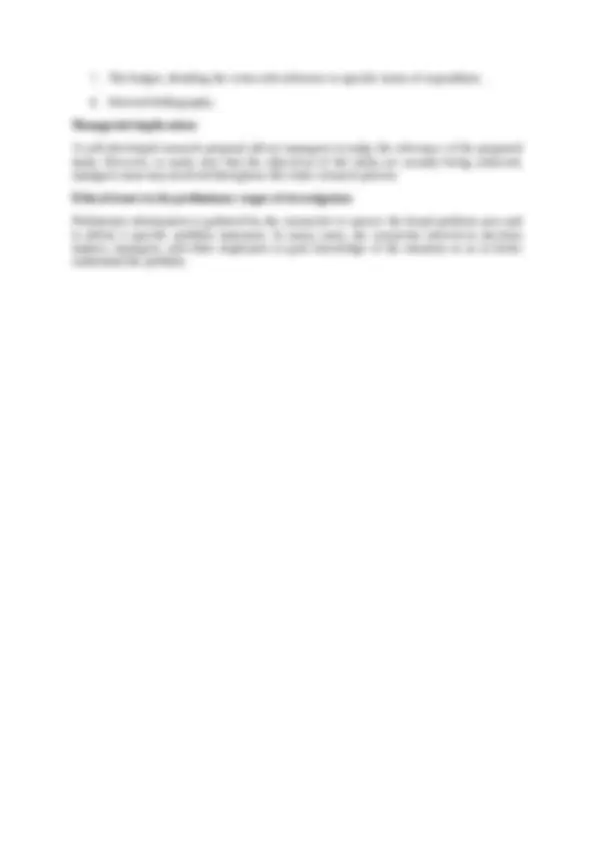



Study with the several resources on Docsity

Earn points by helping other students or get them with a premium plan


Prepare for your exams
Study with the several resources on Docsity

Earn points to download
Earn points by helping other students or get them with a premium plan
Community
Ask the community for help and clear up your study doubts
Discover the best universities in your country according to Docsity users
Free resources
Download our free guides on studying techniques, anxiety management strategies, and thesis advice from Docsity tutors
Summary of Research Methodology from Uma Sekaran's Book
Typology: Summaries
1 / 3

This page cannot be seen from the preview
Don't miss anything!


Enggita Nurrachma Setyaning
041611333025
Accounting - EC
Chapter 3
THE RESEARCH PROCESS: THE BROAD PROBLEM AREA AND
DEFINING THE PROBLEM STATEMENT
Broad problem area
Examples of broad problem areas that a manager could observe at the workplace are as follows:
Preliminary information gathering
classified under two headings:
A literature review is a step-by-step process that involves the identification of published and unpublished work from secondary data sources on the topic of interest, the evaluation of this work in relation to the problem, and the documentation of this work. a good literature review ensures that:
a. Data sources f. Unpublished manuscripts
b. Textbooks g. Reports
c. Journals h. Newspapers
d. Theses i. The Internet
e. Conference proceedings
Defining the problem statement - What makes a good problem statement?
From an academic perspective, research is relevant if:
A good problem statement is relevant but also feasible. A good problem statement is also interesting to you
The research proposal
Basically contains the following:
a. The sampling design.
b. Data collection methods.
c. Data analysis.